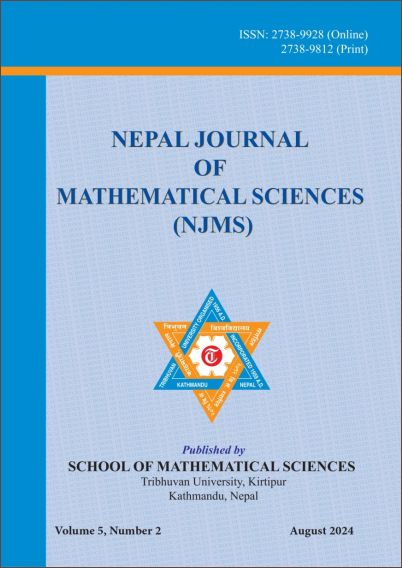Extended Modified Generalized Exponential Distribution: Properties and Applications
DOI:
https://doi.org/10.3126/njmathsci.v5i2.76632Keywords:
Exponential distribution, Hazard rate function, Generalized exponential distribution, Maximum likelihood functionAbstract
This study presents the Extended Modified Generalized Exponential (EMGE) distribution, a novel four-parameter model designed to improve flexibility in modeling diverse hazard rate functions, including bathtub-shaped curves. The EMGE model is formulated by introducing an extra shape parameter into the Modified Generalized Exponential (MGE) model, improving its capacity to represent different failure rate patterns over time. We investigate the suggested distribution's hazard, survival, probability density, and reversed hazard functions, among other statistical characteristics. The EMGE model's parameters are estimated using three distinct techniques: Cramer-Von-Mises Estimation (CVME), Least Squares Estimation (LSE), and Maximum Likelihood Estimation (MLE), ensuring accurate and reliable parameter estimation. The performance of the model is tested on real world data from COVID-19 patient mortality rates, showing a strong fit to the data. Comparative analysis with other established distributions, such as the Odd Lomax Exponential (OLE) and Modified Weibull (MW), highlights the superiority of the EMGE model in terms of fit and information criteria values. Our results demonstrate the potential of the EMGE distribution for improved modeling in reliability analysis and survival data.
Downloads
Downloads
Published
How to Cite
Issue
Section
License
© School of Mathematical Sciences, Tribhuvan University

